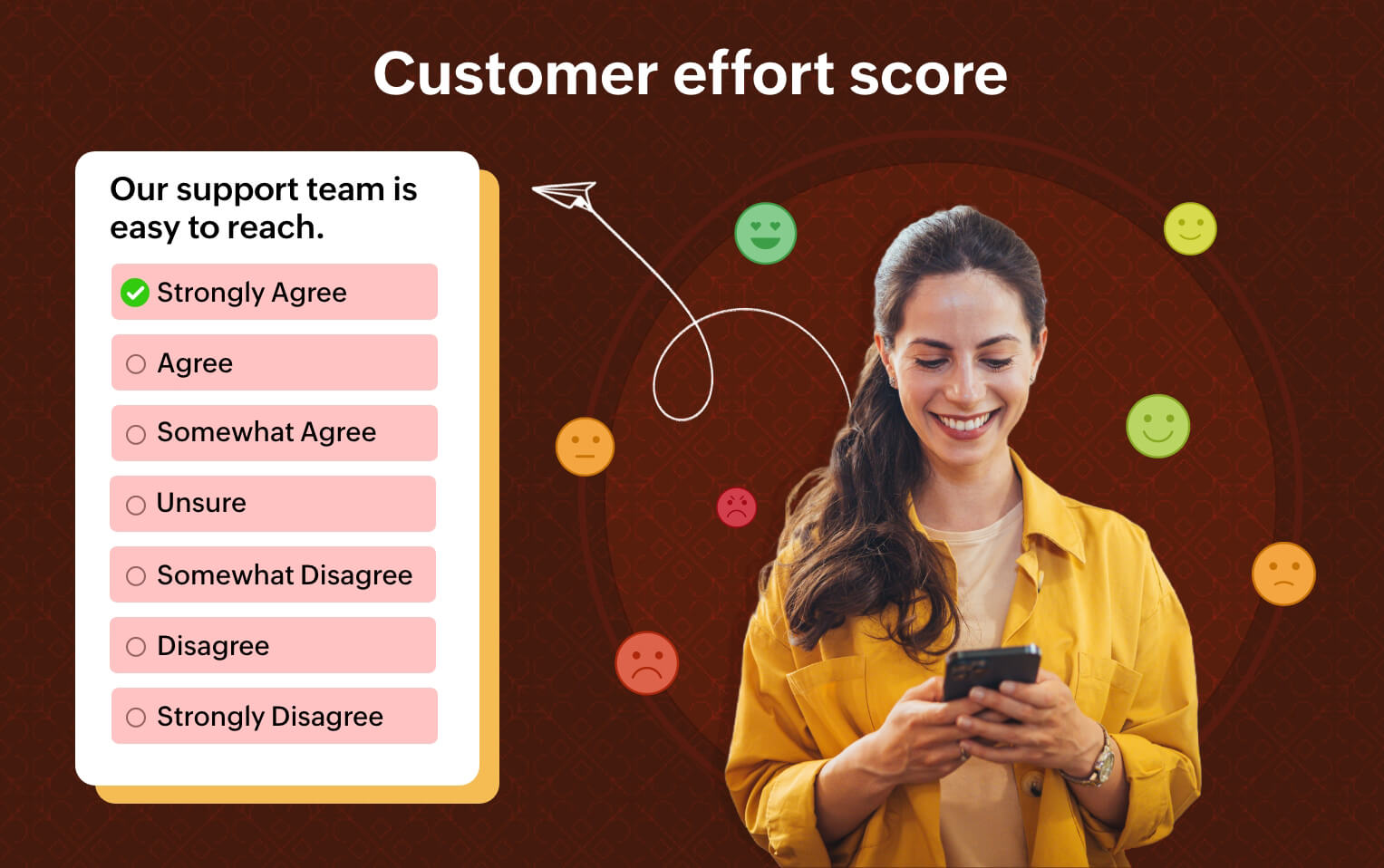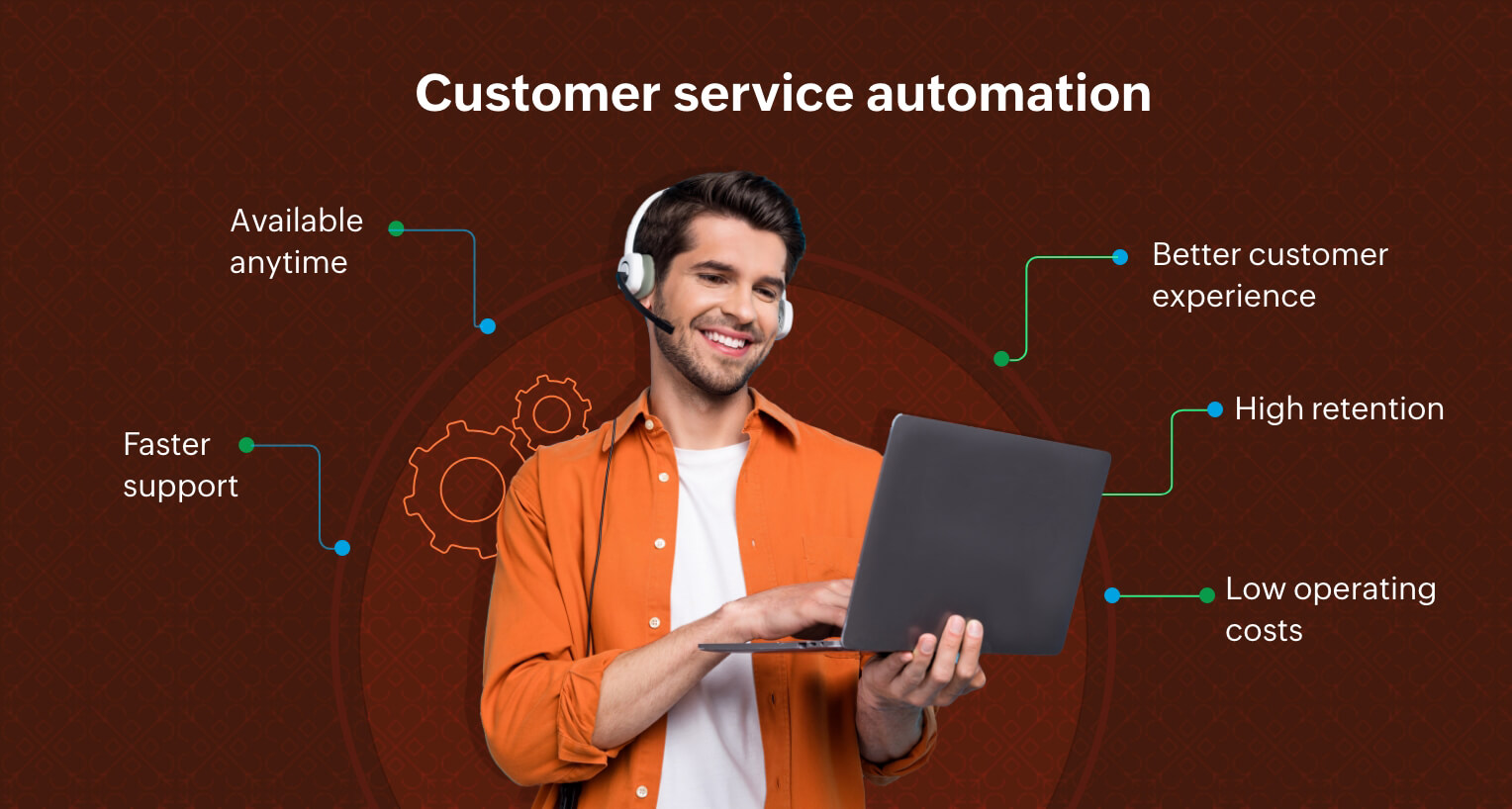Imagine you're evaluating two software tools for your business. While doing so, think about these contrasting experiences you get:
Scenario A: You struggle to find customization options and helpful resources, resorting to email support for integrations, which takes a long time, and to and fro conversations for resolution.
Scenario B: You easily customize the interface to match your brand. You find resources to set up the main features without breaking a sweat. The product has an FAQ chatbot with the option to connect to an live agent in case you need assistance every step of the way.
At the end of the evaluation, when the time comes for payment, which software would you choose? Selecting the software that gives the scenario A experience is a no-brainer. Even if you're already a customer of scenario B software, would you consider renewing the payment for the next year?
But how can businesses know under which scenario they fall and how their customers feel about their product/service? The answer is the Customer Effort Score (CES).

What is a Customer Effort Score (CES)?
The Customer Effort Score measures the effort your customers put into finding a solution about your product/service or connecting with and getting resolution from your support team. In other words, the CES measures how easy or hard for your customers to interact with your business.
Why measure the Customer Effort Score (CES)?
From the above-discussed contrasting scenarios, measuring the CES can give businesses an idea about how easy/difficult it is for customers to reach them or get a solution.
It's easy for the team associated with the product/service to find a solution when they're looking for one because they already know the product/service well. Meanwhile, a prospect/customer wouldn't know where to look and might get discouraged from exploring the product and testing out its maximum potential. This can evoke a negative influence on its usability.
Simulating the prospects and customers' journeys with the product/service will help businesses understand the touchpoints where assistance is required. They can improve engagement by having options to assist proactively.
- Bridging these gaps helps prospects and customers build trust in your business, increases their loyalty, and nudges them to stay with you as long as they need the solution.
- Not being able to find a solution or connect with the support team for assistance frustrates prospects/customers. It'd reflect in your product reviews or social channels, leaving your businesses vulnerable.
- The easier it is for your customers to find a solution, the easier it is for your customer support team, as they'd only get complex, high-priority queries. Ultimately, it helps you reduce your operating costs.
- Overall, it helps you offer a better engagement experience and improves the user experience of the product/service.
How do you calculate the Customer Effort Score (CES)?
To get the CES, businesses follow two well-known and practiced survey methods:
Likert scale
The Likert scale is the most commonly used survey tool for customer effort scores. It's a 5- to 7-point scale where customers are asked to mark how easy it is for them to seek and get assistance from your business. If the customers select points 5, 6, or 7 (on a 7-point scale), you're a low-effort business. If the customers select points 1, 2, or 3, it shows you're a high-effort business. I.e., your customers must put in a lot of effort to find a solution or get help from your support teams.
Emoticon scale
The second method to get a Customer Effort Score is the emoticon scale. Customers will be asked to mark their feedback using a sad, neutral, or happy face to convey their scores. Businesses can assign a value to these faces to calculate the CES.
After the scores are collected, here's the formula to measure customer effort score:
CES = (Total number of low-effort scores [5/6/7 points] or happy faces divided by the total number of survey responses)* 100
There is no industry standard for a good Customer Effort Score. So, the goal of organizations is to get the maximum score and try to outscore the previous records as it's not a competition between other organizations but within themselves. It indicates the organization's progress in making their product/service simple enough for their customers to find/get solutions.
Tips for building and distributing CES surveys
Building a CES survey is fairly simple as it's a standard format, but distribution is tricky. The survey should be shared with the customers/prospects at the right time to get answers. Here are some options businesses can use for distributing Customer Effort Score surveys:
When to use a CES survey
First purchase after evaluation
If prospects make a purchase after evaluating your offerings, that's a great time to share the CES survey as their memory will still be fresh about the hardships they faced, if any. As they've paid for it, they'll feel obligated to share because it'll help them get a better experience in the future.
Year-end survey
As the number of customers grows, it'll be hard for businesses to keep track of each of them. Some might be satisfied with the product, and some might not. So it's essential to do a general year-end survey to understand the pulse of your customers. Distributing the Customer Effort Score surveys along with the year-end survey will help you understand if there is anything you need to do to make solutions accessible.
Prospects who don't purchase and customers who cancel
Businesses can learn how to better themselves from those who leave—i.e., the prospects who didn't convert after evaluation and the customers who canceled your offerings. They can give you a fair idea about the difficulties they faced. Sharing the CES survey with them can help you identify the loopholes in your systems and practices.
How is a CES different from a CSAT (Customer Satisfaction) and an NPS (Net Promoter Score)?
A CES isn't the sole metric to measure and know how and what customers feel about your business. Businesses track other metrics like the customer satisfaction score (CSAT) and Net Promoter Score (NPS). Though they overlap with the Customer Effort Score in their objective, a slight difference exists in how they're perceived.
A CSAT is measured to understand how the customers feel about the support experience they're getting from the businesses. In the NPS survey, customers are asked how likely they'd be to recommend the business to their friends and peers.
Though responses from both the CSAT and NPS can explain how customers feel about your business, these scores don't give you an idea about where and what improvements are needed to make it easy for them to find/get solutions.
How to improve the Customer Effort Score (CES)
Streamline your self-service options
When coming across any questions, prospects/customers would first like to resolve them by themselves. Having the required articles or videos available and accessible to them would help resolve those queries faster. Streamlining self-service options can help your business get a better CES.
Simulate your prospects/customers' journeys
The simple, fast, and easy way to identify the difficulties and roadblocks that those evaluating and using your products are facing is to simulate their journey by yourself. Businesses can ask new team members—or hire people who haven't interacted with your product/service—to evaluate and provide feedback. Such feedback from a fresh set of eyes can help you see your process differently and seal the loopholes.
Offer the option to engage at all touchpoints
Another simple way to make prospects complete the evaluation without dropping out and ensure customers continue using your offerings is to provide the option to connect with your support team at all touchpoints. Keeping a live chat on your product can help evaluators instantly contact your team to clarify their queries and continue the evaluation. It helps provide a better user experience and improves your Customer Effort Score.
Providing the right tool for your support teams
Your support teams must have systems and processes in place to provide the best support experience. But if they're using outdated tools that don't help them provide support faster, it'll ultimately reflect in the customer experience. A modern, sophisticated tool with omnichannel support options and advanced features can help support teams provide faster support, which will offer a better experience.
How can Zoho SalesIQ help you increase your CES and retention?
Speaking about the right tool, Zoho SalesIQ is a customer engagement platform that can help your teams provide the best experience to your customers.
- SalesIQ has a zero-code chatbot builder platform, Zobot, which any business can use to build a bot in mere minutes and have it as a first line of communication for their prospects and customers. The bot flow can be defined to get the essential information from them and routed to the available agents for resolution. Now we also provide bot templates for multiple industries. So you can just pick a template and deploy the bot within minutes.
- With SalesIQ's Answer Bot, you can associate your FAQs, knowledge bases, articles, and resources so that when a prospect or customer has a question, the bot will clarify those queries by sharing the related collaterals. With Zia's GenAI capability, Answer bot can now generate conversational answers to your customers making their engagement experience even better.
- SalesIQ can also be integrated with OpenAI. So, if the queries are beyond what you have on your resources, the generative AI will kick in with solutions. If you want OpenAI to answer queries personalized for your business and your customers, now you can integrate SalesIQ with ChatGPT assistant as well.
Overall, SalesIQ helps businesses be there for their prospects/customers all the time and provides resolution instantly. It results in delivering a better customer experience and building trust so they stay with you for a long time.
Would you like to see how SalesIQ works and how it copes with your customer-facing teams? Sign up now for a free 15-day trial—no credit card needed.
Related resources
Here are some blogs to help you build the best customer engagement strategy and implement it for your business.
